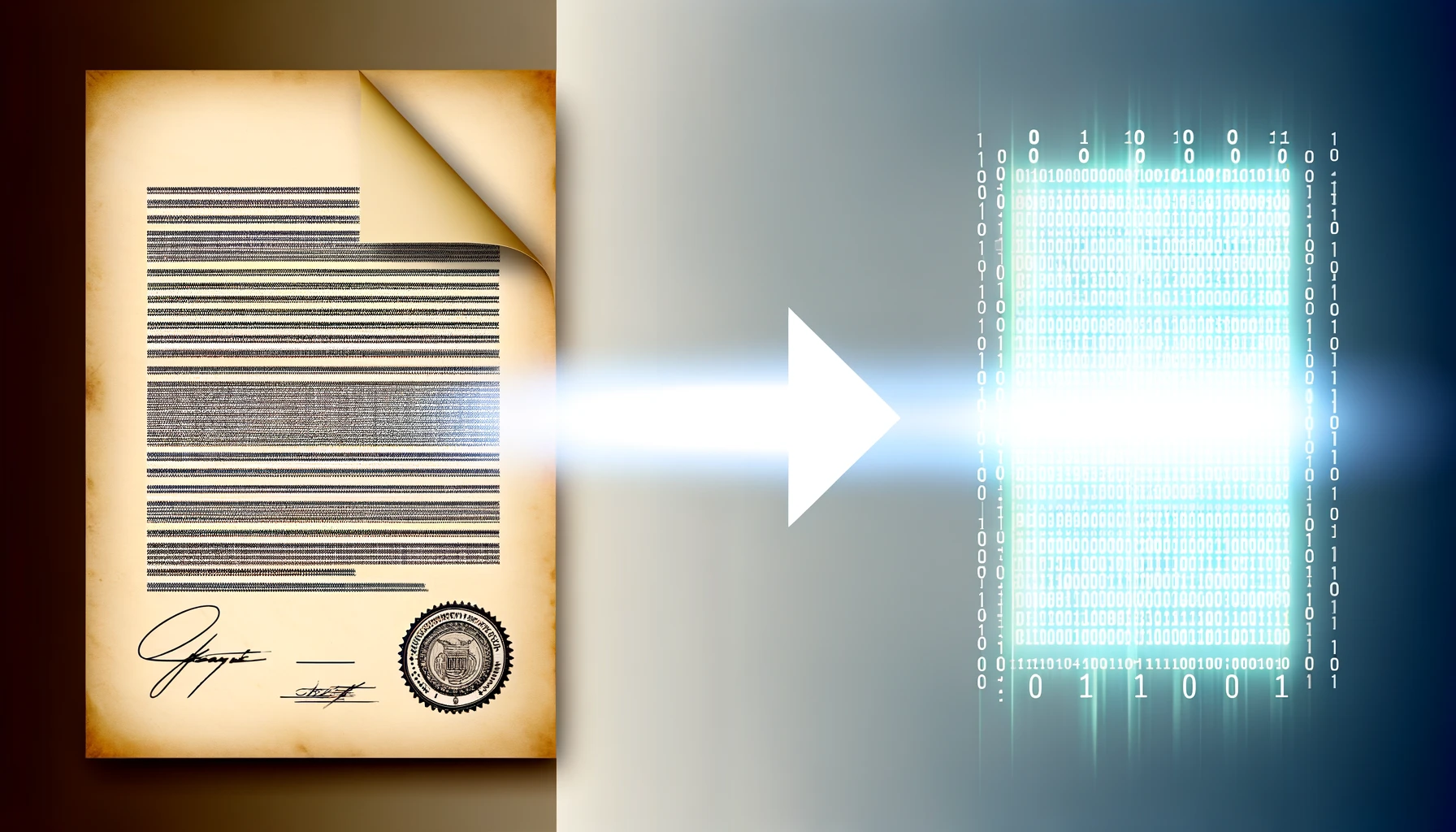
For centuries, deeds went through a manual filing process for transmitting, recording, and storing. This is changing, with eRecording emerging as the new standard.
Why the shift? The shutdowns in the early days of Covid jolted offices into a different mode of operating. Around the same time, county offices began strongly recommending eRecording.
Electronic signatures (eSignatures) and records, including sound files, are now as legally binding as traditional paper documents. And now, people can use encrypted digital signatures for identity protection.
Speed, Efficiency, Safety: eRecording Is a Game Changer

eRecording involves submitting documents through a computer. That can mean uploading them through a portal on a website, or scanning and submitting. Our county officials can now check, stamp, record, and store the documents digitally. If there are errors in the formatting or the correct fee is missing, then the documents bounce back to the sender, with requests for fixes. Correctly submitted and duly recorded documents are returned electronically and can be searched using a computer.
This is now the norm for recording deeds and mortgages. Relevant state and federal laws exist to help local offices implement secure electronic recording.
And counties respond. They continually adopt tech-enabled legal standards.
County deed recording offices work with a number of trusted software vendors to get the daily job done. These may include the Indecomm® Global Services mortgage software company, the Cott Systems recording software company, plus Simplifile®, eRecording Partners Network, LLC (ePN), Corporation Service Company (CSC) and others.
The upshot of all this activity behind the scenes? No more waiting for days, even weeks, to get our recorded documents back by mail. The whole process takes just minutes.
So far at least 40% of the nation’s counties have people record their deeds and other key documents by eRecording. This number comes from ICE Mortgage Technology, Inc., which owns Simplifile®, a company describing itself as the largest network for eRecording mortgages and deeds. As the number keeps growing, eRecording has been a real game changer for real estate professionals, home sellers, and mortgage applicants.
First, there’s the speed and efficiency. But even more important is the security of transactions. That’s why attorneys and lenders, title companies, surveyors, and others can confidently file deeds, mortgages, maps and other documents electronically.
We Know How the Technology Evolved. But How Did the Law Keep Up?
There’s a group called the Uniform Law Commission that influences a whole lot of what we do in our daily interactions. It’s made up of attorneys, lawmakers, and judges. The group drafts model laws that states could decide to adopt. This is how today’s eRecording laws took shape.
Since the 1990s, states have been lawmaking to accept electronic signatures. To this day, particular states have their own eSignature laws on the books. Consider New York, the nations’ finance hub. It passed its own Electronic Signatures and Records Act (PDF) to say electronic records are valid.
In 1999, the Uniform Electronic Transactions Act (UETA) came out to standardize eCommerce. States got together on this. This model law validates the various eSignature formats and the (formerly on-paper) documents converted into digital records. It’s written for states, and most states have adopted it. This harmonizes the states, and equips them for today’s finance systems. It also means properly recorded deeds, electronically processed, carry the same legal weight as ye olde paper records.
In 2000, the ESIGN Act made eSigning valid federally! In 2000, the United States enacted the Electronic Signatures in Global and National Commerce Act, called ESIGN for short. Now, all purchase agreements, deeds, and mortgage documents can be signed and recorded online. With ESIGN, rules for transactions among people of different states (or even different countries) got much more straightforward.
And woohoo! eRecording of deeds came to the forefront in 2004. Busy as ever, the Uniform Law Commission hammered out its Uniform Real Property Electronic Recording Act (URPERA). As you might guess from its name, this model law exists to guide county deed recorders! Where a recordable document calls for an original signature, URPERA says that does not have to mean somebody’s handwritten signature. A person’s eSignature does the same job.
So, deed recorders’ offices introduced eRecording options. And this has made deed recording more convenient for all involved. It also gives state agencies the ability to verify homeownership.
And we all lived happily ever after.
The above legal story explains how eRecording became the modern standard for submitting documents to the public records. In some states, electronic deed recording is the solid norm — in every single county. Arizona, Colorado, Hawaii…These states have eRecording everywhere.
Hot Off the (E-) Press in Kentucky and Pennsylvania
There’s a new Kentucky law on eRecording, effective since last summer. It requires documents in Kentucky counties to be eRecorded, in every county.
Over the last two decades, Kentucky has changed the way deed recorders handle people’s titles, deeds, and mortgages. The state now has digitally recorded tens of thousands of documents since 2020.
The new provision requires all Kentucky counties to run a website where people can file their deeds. All Kentucky counties now have one of these systems.
Meanwhile, in Pennsylvania, Delaware County offers the next-next level: access to cloud searches and an easier way to set up title alerts for your address, to know if anyone’s filed a claim on that all-important asset: your home.
How Does Your Home County Accept Deeds for Recording?
Does your local office of the recorder of deeds allow you to submit documents for digital recording? If so, you’re freed from having to go in person to the recorder’s office (or the post office). You may file remotely.
If you’re not sure, just type your county’s name into a browser, along with “does my county have eRecording for deeds?” And you’ll get the scoop.
And if you’ve ever submitted a deed or a mortgage for eRecording, you might not have given it much thought. But your county has come a long way to get to this intersection of technology and real estate law!
Set up your free account with Deeds.com to eRecord your documents.
Supporting References
Brenna Angel, Associate Director of Communications for the Kentucky Association of Counties (Frankfort, KY): County Clerks Making Progress on eRecording Mandate (Oct. 3, 2022).
Union County, New Jersey: Union County Clerk Recommends eFiling Services (Mar. 16, 2020; quoting Union County Clerk Joanne Rajoppi).
Brian Haytcher, Star Beacon (TNS/Tribune Content Agency, LLC), via GovTech Magazine: Ashtabula County, Ohio, Introduces Electronic Records System (Jul. 19, 2022).
Rob Eastwood for WHKY News: WHKY First Electronic Recording of Surveyors Plat Announced in Alexander County (Nov. 16, 2023; by WHKY, LLC, for the Hickory-Lenoir-Morganton, North Carolina Metro Area).
Simplifile®/ICE Mortgage Technology Inc. via ICEMortgageTechnology.com: eRecording Is Today’s Standard for Document Recording.
Simplifile®/ICE Mortgage Technology Inc. via ICEMortgageTechnology.com: eRecording Laws and Legislation.
And as linked.
More on topics: Notaries go remote, Covid effect – real estate’s digital shift
Photo credits: Vojtech Okenka, via Pexels/Canva.
